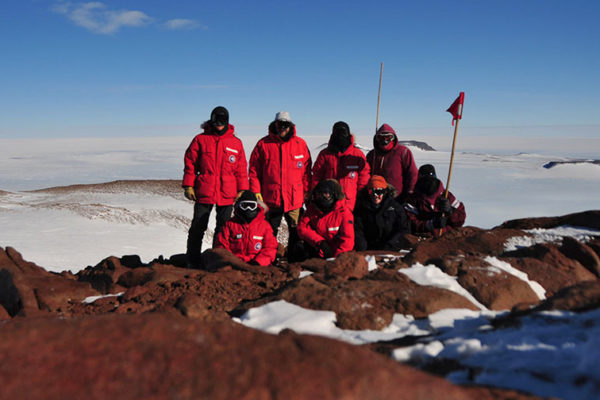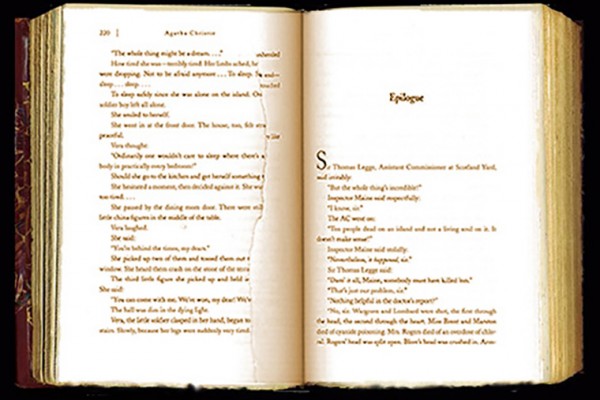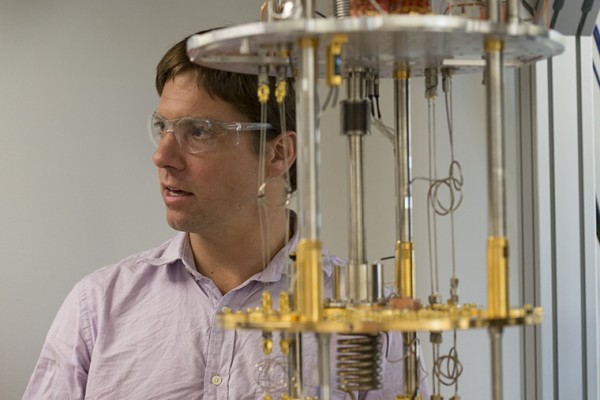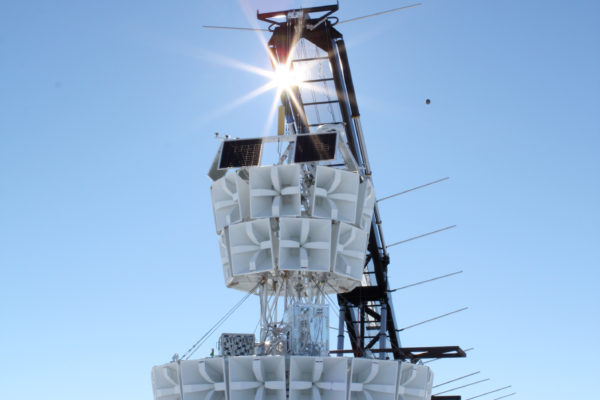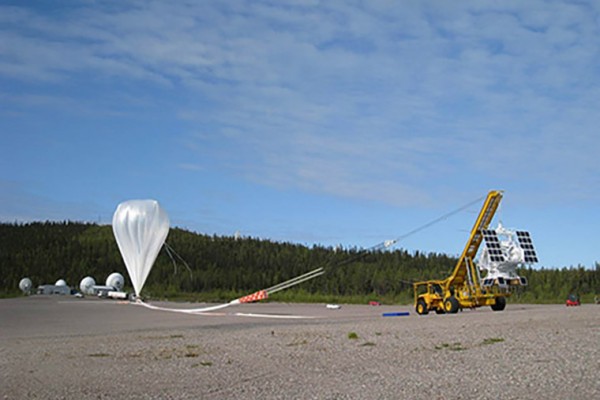Research as art
An inaugural exhibit of images by scientists, titled “Research as Art,” held April 3, included eerie landscapes created by vortices in superfluids, smeared false-color data from satellite-borne instruments, three-dimensional images of grains that exploded out of supernovas and many more enigmatic and colorful images.
Hunting for meteorites
Every austral summer, a group of volunteers heads off to a remote region
of Antarctica to set up a field camp on the ice. For the next month, they search the ice and nearby glacial moraines for dark rocks that might be extraterrestrial in origin. Research scientist Christine Floss describes this year’s trip, which included a record-setting day.
In the quantum world, the future affects the past
In the quantum world, the future predicts the past. Playing a guessing game with a superconducting circuit called a qubit, a physicist at Washington University in St. Louis has discovered a way to narrow the odds of correctly guessing the state of a two-state system. By combining
information about the qubit’s evolution after a target time with
information about its evolution up to that time, the lab was able to
narrow the odds from 50-50 to 90-10.
Murch wins Sloan Research Fellowship
The Alfred P. Sloan Foundation announced Feb. 23 that Kater Murch, PhD, assistant professor of physics in Arts & Sciences at Washington University in St. Louis, has been awarded a 2015 Sloan Research Fellowship. He is among 126 outstanding U.S. and Canadian researchers selected as fellowship recipients this year. The fellowships are given to early-career scientists and scholars whose achievements and potential identify them as rising stars, the next generation of scientific leaders.
ANITA III launched over Antarctica
Calm winds allowed the ANITA III experiment to be launched into the polar vortex above Antarctica on Dec. 17. The instrument consists of 48 radio receivers that are listening for pings that will be generated when ultra-high-energy cosmic rays generate radio-frequency bursts that reflect off the ice and up to the instrument at a float altitude of 120,000 feet, four times higher than commerical airliners cruise.
Physics graduate student receives NASA fellowship
Josiah Lewis, a graduate student in physics in Arts & Sciences at Washington University in St. Louis, has received a NASA Earth and Space Sciences Fellowship for 2014–15. The fellowship is for research titled “Atom-Probe Studies of the Origins of Meteoritic Nanodiamonds and Silicon Carbide.”
Aiming for the stars
Early in September, the X-Calibur mission, preparing for launch at the Columbia Scientific Balloon Facility in Fort Sumner, N.M., put its pointing system through its paces to make sure all of its parts were working in programmed harmony.
Balloon rise over Fort Sumner
In a few days, a balloon-borne telescope sensitive to the polarization of high-energy “hard” X rays will ascend to the edge of the atmosphere above Fort Sumner, N.M., to stare fixedly at black holes and other exotic astronomical objects. It will be carried aloft by a stratospheric balloon that will expand to a sphere large enough to hold a 747 jetliner the float height of 120,000 feet, three times the height at which commercial aircraft fly and on the edge of Earth’s atmosphere. Launching the balloon is not child’s play.
Experiments explain why some liquids are ‘fragile’ and others are ‘strong’
Only recently has it become possible to accurately “see” the structure of a liquid. Using X-rays and a high-tech apparatus that holds liquids without a container, a physicist at Washington University in St. Louis has compared the behavior of glass-forming liquids as they approach the glass transition. The results are the strongest demonstration yet that bulk properties like viscosity are linked to microscopic ones like structure.
Can large introductory science courses teach students to learn effectively?
In the past 10 years an active-learning course, called “Active Physics,” has gradually displaced lecture-based introductory courses in physics at Washington University in St. Louis. But are active-learning techniques effective when they are scaled up to large classes? A comprehensive three-year evaluation suggests that “Active Physics” consistently produces more proficient and confident students than the lecture courses it is replacing.
View More Stories

